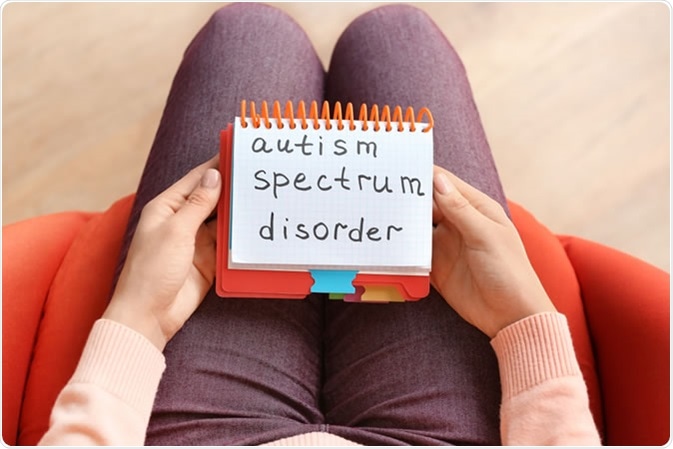Skip to:
Autism spectrum disorder (ASD) is a complex condition that manifests itself by three years of age. Poor social skills, sensory integration difficulties and speech and language problems encompass the typical behavioural signs.
The primary focus of research has been on receptive language skills and behavioural difficulties. In comparison, little attention has been given to the articulatory/phonological aspects of language production in childhood ASD.

Credit: Africa Studio / Shutterstock
Phonological difficulties and autism
According to the most recent diagnostic criteria for ASD, there are two domains of impairments: social communication impairment and repetitive behaviours. Earlier studies have explored the articulation/phonological difficulties in children with ASD but have conducted a detailed articulation analysis.
Studies have shown that children with autism can exhibit specific phonological patterns. Some children show atypical phonological patterns that are not typical to normal development. Schoen et al. studied the phonological development in 30 toddlers with ASD. The study showed that all toddlers with ASD demonstrated atypical vocalizations when compared to matched controls.
Using spontaneous speech samples, another study found that participants with ASD performed worse on phonetic targets. In this line, researchers have proposed phonological complexity and motivational support as a way of maximizing the efficacy of treatment in ASD.
By using both perceptual and acoustic measures to assess speech sound behaviour, prosody and voice behaviour, Shriberg and colleagues found an increased rate of speech errors, inappropriate prosody and higher prevalence of speech delay in children with autism.
Using various language tests, Wolk and Brennan studied eight children with ASD who were divided into two groups: a group exhibiting mild-moderate global language delay and a group that had a severe global language delay. Results from this study showed that all children had a phonological impairment, with some showing typical processes reflecting delayed development and some exhibited atypical processes not typical of normal development. Also, two trends occurred: a) There was a significant, positive correlation between language delay and several phonological processes; and b) there was a higher occurrence of both typical and atypical phonological processes in the severely impaired group.
Apraxia of speech and autism
A recent study conducted by the Penn State Milton S. Hershey Medical Center has found apraxia as a common occurrence in ASD. Apraxia is a speech sound disorder that affects the brain pathways responsible for planning the movement sequences involved in speech production. It results in distorting sounds, making inconsistent errors in speech, tone, stress and rhythm.
Using the Checklist for Autism Spectrum Disorder (CASD), the study found that two-thirds of children who were initially diagnosed with autism also had apraxia. Most importantly, the CASD does not over-diagnose ASD in children with apraxia.
Some conceptual and empirical perspectives support the hypothesis that apraxia may be the cause of the absence of speech development in ASD. Children with ASD have praxis deficits imitative processes and influence and impair the acquisition and performance of a range of motor commands. Extension of findings from praxis studies is that praxis deficit in speech can be the cause of failure in ASD. Apraxia’s neurobehavioural substrates could account for the speech and prosody findings in ASD.
There are very few reports on treatment protocols targeting articulatory/phonological impairments in children with ASD. A case study reported success whereby autism and apraxia of speech were co-occurring. The strategy employed in this case was called initial phonemic cueing (IPC) and it involved facilitating sound sequences and encouraging new speech behaviours. However, due to the nature of the experiment generalization are hard to be made.
Moreover, autism and apraxia and other phonological deficits are highly comorbid. Thus, all children diagnosed with apraxia must be monitored for signs of autism and vice versa. This will allow earlier identification and access to services appropriate for the child’s needs.
Difficulties in the research of speech
The scarcity of knowledge in the articulatory/phonological abilities of children with ASD is due to difficulties when researching speech sound behaviours in these children. Many behaviour complications in this population group pose difficulties when studying these children and collecting data.
Only a limited amount of speech can be obtained for analysis from these children due to the lack of desire to communicate and their decreased social motivation. Data transcription and analysis can be challenging due to severe unintelligibility and use of jargon and external noises and verbal self-stimulatory behaviours.
Future directions
Continued screening for autism and apraxia, especially non-verbal ones, mean that children have a better chance of receiving appropriate early intervention. Larger data protocols are needed to investigate the phonological/articulatory patterns in children with ASD and expand the underlying models of phonology.
Further correlation studies are needed to understand:
- The link between language severity and specific types of phonological deficits
- The relationship between the severity of phonological difficulties and behavioural manifestations
Deeper investigation into the speech sound deficits in children with ASD may be vital for designing ultimate rehabilitation programs for these children.
References
Further Reading
Last Updated: Jul 24, 2023